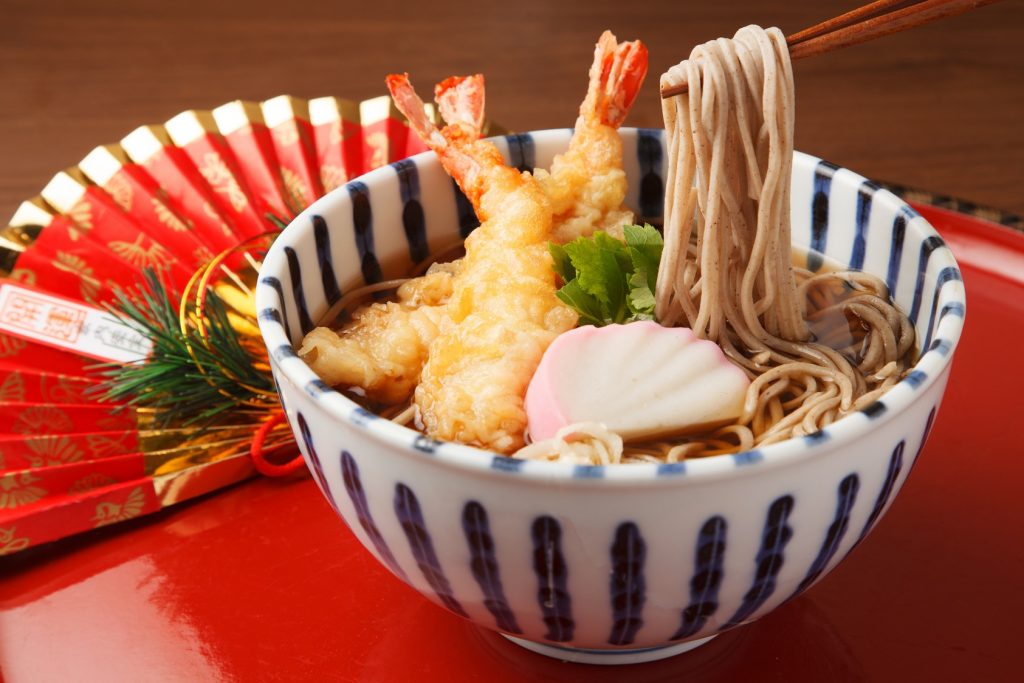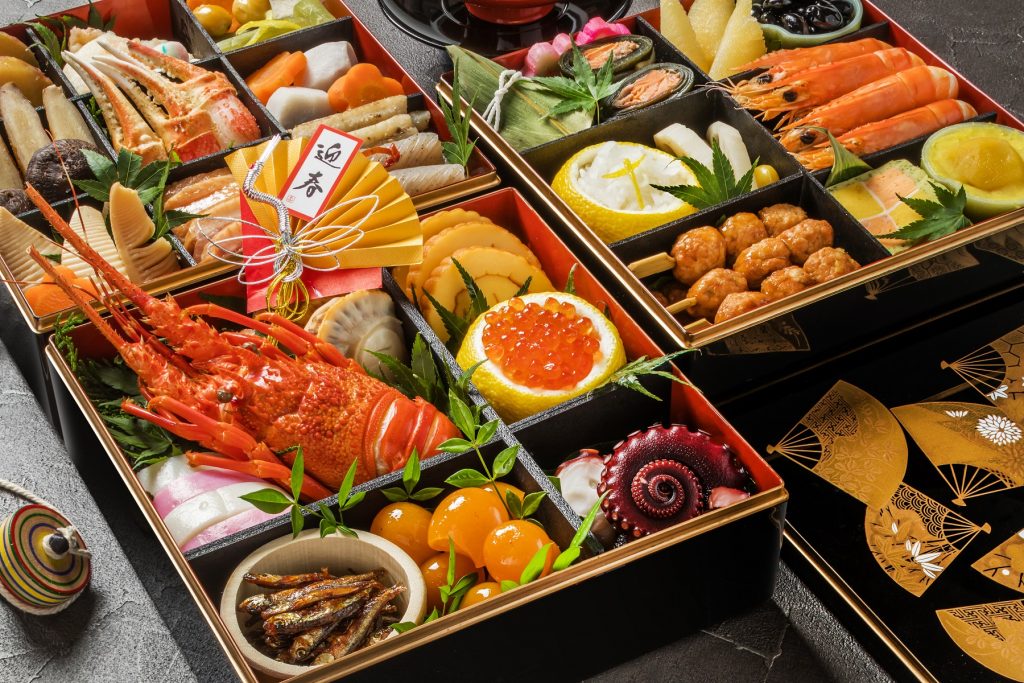The New Year’s celebration brings forth a festive time. Many countries and cultures have their own traditions for celebrating, and Japan is no exception. One of the ways that people celebrate the New Year’s is through food. Traditionally there are certain foods that are eaten during the celebrations, and you may find that many of the dishes or ingredients are actually symbolic of something. Although depending on where in Japan, certain things may differ, and generally there are main dishes that are enjoyed. Here is a list of these New Year dishes.
1. Toshikoshi Soba (年越しそば)

Toshikoshi soba is traditionally eaten the night before New Year’s on New Year’s Eve. The dish consists of buckwheat noodles in a soup with various toppings. Sometime the dish will be simply garnished with some green onions, while other times it is topped with things such as tempura, nori (seaweed), egg, or spinach. Depending on where you go or where you are, people may have different perspectives and opinions, but the long soba noodles typically symbolise longevity or long life. So, by eating the noodles, it represents your wish for a continued long life in the next year as well.
2. Ozouni (お雑煮)
Ozouni, also known as ozoni or zoni, is a soup dish that is traditionally eaten on New Year’s Day. Although there are many variations, the dish usually consists of chicken and various vegetables and sometimes tofu as well. It is also usually eaten with mochi in it. The vegetables can range from carrots, shitake mushrooms, daikon, and many more. The mochi much like the noodles in the toshikoshi soba, are supposed to represent longevity, due to its stretchy form.
3. Osechi (おせち)

Osechi is a traditional New Year’s assortment of food where each and every dish in it supposedly has its own individual symbolic role. There are so many components to osechi, and it varies so much depending on who prepared it. It is commonly put into a traditional black bento box and is compartmentalised based upon the dish. Below are just some of the more commonly found dishes in osechi.
- Black Beans: Usually made sweet, they are said to represent hard work.
- Datemaki: A type of sweet, rolled egg mixed with fish cake, the dish is supposed to represent scholarship.
- Kobumaki/Konbumaki: This is a type of rolled kelp dish. In Japan, many different types of kelp and seaweed are eaten, but this particular kind is called konbu. It is supposed to represent happiness.
- Kazunoko: Kazunoko is also found in osechi and is herring roe. It usually is salty and crunchy, and it represents fertility.
- Shrimp: It is also very common to find shrimp in many variations in osechi. Sometimes they are large and whole, sometimes as tempura, and sometimes peeled. The shrimp is also said to be for longevity, much like many things found in a New Year’s dish.
- Gobo: Gobo is burdock root and is also used in many variations. One of the most common versions is as kinpira gobo, a slightly sweet gobo and carrot dish. Gobo is said to represent strength and stability.
There are many other dishes that are also included in osechi, and it tends to vary a lot depending on the region and even household. It is interesting to learn all of the symbolic meanings that each dish represents, and you can’t help but feel like you’re going to have a great next year with all the symbolic dishes you’re consuming.
These are some of the main dishes enjoyed during the New Years, but depending on who you ask, there could be many more. Another common thing that is enjoyed around the New Year is mikan, or a type of citrus fruit resembling a tangerine. Japan has many interesting cultural traditions regarding New Year’s including with food. We can’t help but wonder what traditions also go on in your own family or culture!










